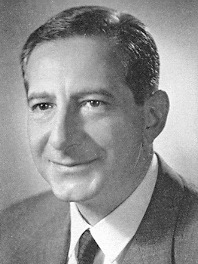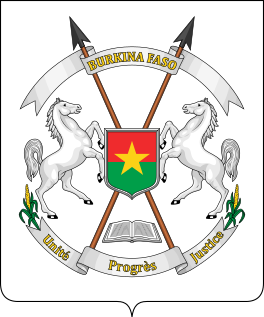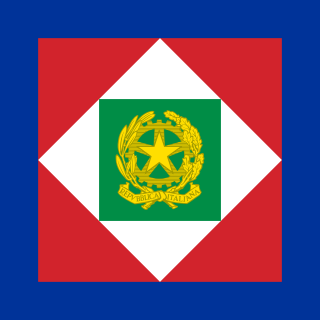Italian presidential election, 1992 
|
|---|
|
|
|
The 1992 election of the President of the Italian Republic was held on May 13–25, 1992. As a second-level, indirect election, only Members of Parliament and regional deputies were entitled to vote. Oscar Luigi Scalfaro was elected head of state of the Italian Republic, a role of representation of national unity and guarantee that Italian politics comply with the Constitution, in the framework of a parliamentary system.

Oscar Luigi Scalfaro was an Italian politician and magistrate, the ninth President of the Italian Republic from 1992 to 1999, and subsequently a senator for life. Formerly a member of Christian Democracy, he belonged to the centre-left Democratic party.
A head of state is the public persona who officially represents the national unity and legitimacy of a sovereign state. Depending on the country's form of government and separation of powers, the head of state may be a ceremonial figurehead or concurrently the head of government. In a parliamentary system the head of state is the de jure leader of the nation, and there is a separate de facto leader, often with the title of prime minister. In contrast, a semi-presidential system has both heads of state and government as the leaders de facto of the nation.

A parliamentary system is a system of democratic governance of a state where the executive derives its democratic legitimacy from its ability to command the confidence of the legislature, typically a parliament, and is also held accountable to that parliament. In a parliamentary system, the head of state is usually a person distinct from the head of government. This is in contrast to a presidential system, where the head of state often is also the head of government and, most importantly, the executive does not derive its democratic legitimacy from the legislature.
According to the Italian Constitution, the election must be held in the form of secret ballot, with the Senators, the Deputies and 58 regional representatives allowed to cast their votes. When the 1992 election was held, the Senate counted 315 members and the Chamber of Deputies counted 628 members; the electors were in total 1002. The election is held in the Palazzo Montecitorio , home of the Chamber of Deputies, with the capacity of the building being expanded for the purpose. The first three ballots require a two-thirds majority of the voters in order to elect a President. Starting from the fourth ballot, an absolute majority is required for candidates to be elected. The election is conducted by the Speaker of the Chamber of Deputies, who has the authority to proceed to the public counting of the votes. The presidential mandate lasts seven years.

The Constitution of the Italian Republic was enacted by the Constituent Assembly on 22 December 1947, with 453 votes in favour and 62 against. The text, which has since been amended 15 times, was promulgated in the extraordinary edition of Gazzetta Ufficiale No. 298 on 27 December 1947. The Constituent Assembly was elected by universal suffrage on 2 June 1946, at the same time as a referendum on the abolition of the monarchy. The Constitution came into force on 1 January 1948, one century after the Statuto Albertino had been enacted. Although the latter remained in force after Benito Mussolini's March on Rome in 1922, it had become devoid of substantive value.

The Palazzo Montecitorio is a palace in Rome and the seat of the Italian Chamber of Deputies.
On the first ballot, the three major parties have the following candidates : Giorgio De Giuseppe for the Christian Democracy, Nilde Iotti for the Italian Communist Party and Giuliano Vassalli for the Italian Socialist Party.

Leonilde Iotti, commonly known as Nilde Iotti was an Italian politician of the Communist Party, the first woman to become president of the Italian Chamber of Deputies for three consecutive legislatures from 1979 to 1992.

The Italian Communist Party was a communist political party in Italy.

Giuliano Vassalli was an Italian politician, lecturer and lawyer.
On May 25, after the murder of Giovanni Falcone, Oscar Luigi Scalfaro, the candidate endorsed by the Christian Democracy,was elected on the 16th ballot with 672 votes. His term officially started with a swearing-in ceremony held on May 28.

Giovanni Falcone was an Italian judge and prosecuting magistrate. From his office in the Palace of Justice in Palermo, Sicily, he spent most of his professional life trying to overthrow the power of the Sicilian Mafia. After a long and distinguished career, culminating in the Maxi Trial in 1986–1987, on 23 May 1992 Falcone was assassinated by the Corleonesi Mafia in the Capaci bombing, on the A29 motorway near the town of Capaci.

The Politics of Burkina Faso takes place in a framework of a semi-presidential republic, whereby the Prime Minister of Burkina Faso is the head of government, and of a multi-party system. The President of Burkina Faso is the head of state. Executive power is exercised by both the President and the Government. Legislative power is vested in both the government and parliament. The party system was dominated by the Congress for Democracy and Progress (CDP) until the 2014 Burkinabé uprising. Since then, the CDP has lost influence. The Judiciary is independent of the executive and the legislature. The Economist Intelligence Unit rated Burkina Faso as a "hybrid regime" in 2016.

The President of the Czech Republic is the elected formal head of state of the Czech Republic and the commander-in-chief of the Military of the Czech Republic. Unlike counterparts in other Central European countries such as Austria and Hungary, who are generally considered figureheads, the Czech president has a considerable role in political affairs. Because many powers can only be exercised with the signatures of both the President and the Prime Minister of the Czech Republic, responsibility over some political issues is effectively shared between the two offices.

The Senate of the Republic or Senate is a house of the bicameral Italian Parliament. The two houses together form a perfect bicameral system, meaning they perform identical functions, but do so separately. Pursuant to Articles 57, 58, and 59 of the Italian Constitution, the Senate has a variable number of members, of which 309 are elected from Italian constituencies, 6 from Italian citizens living abroad, and a small number are senators for life, either appointed or ex officio. It was established in its current form on 8 May 1948, but previously existed during the Kingdom of Italy as Senato del Regno, itself a continuation of the Senato Subalpino of Sardinia established on 8 May 1848. Members of the Senate are styled Senator or The Honourable Senator and they meet at Palazzo Madama, Rome.

Romania elects on a national level a head of state – the president – and a legislature. The president is elected for a five-year term by the people. The Romanian Parliament has two chambers. The Chamber of Deputies has currently 329 members, elected for a four-year term by party-list proportional representation on closed lists. The Senate (Senatul) has currently 136 members, elected for a four-year term by party-list proportional representation on closed lists.

The Italian Parliament is the national parliament of the Italian Republic. The Parliament is the representative body of Italian citizens and is the successor to the Parliament of the Kingdom of Sardinia (1848–1861) and the Parliament of the Kingdom of Italy (1861–1946). It is a bicameral legislature with 945 elected members and a small number of unelected members (parlamentari). It is composed of the Chamber of Deputies, with 630 members (deputati) elected on a national basis, and the Senate of the Republic, with 315 members (senatori) elected on a regional basis, plus a small number of senators for life, either appointed or ex officio. The two houses are independent from one another and never meet jointly except under circumstances specified by the Constitution.

Italy elects, at the national level, a Parliament consisting of two houses: the Chamber of Deputies with 630 members; and the Senate of the Republic with 315 elected members, plus a few senators for life. The President of the Republic is elected for a seven-year term by the two houses of Parliament in joint session.

A snap national general election was held in Italy on 21 April 1996 to elect members of the Chamber of Deputies and the Senate of the Republic. Romano Prodi, leader of the centre-left coalition The Olive Tree, won the election, narrowly defeating Silvio Berlusconi, who led the Pole for Freedoms centre-right coalition.

The President of the Italian Republic is the head of state of Italy and in that role represents national unity and guarantees that Italian politics comply with the Constitution. The President's term of office lasts for seven years. The 11th President of the Republic, Giorgio Napolitano, was elected on 10 May 2006 and elected to a second term for the first time in Italian Republic history on 20 April 2013. Following Napolitano's resignation, the incumbent President, former Constitutional judge Sergio Mattarella, was elected at the fourth ballot with 665 votes out of 1,009 on 31 January 2015.

The indirect election of the President of the Italian Republic was held on May 8–10, 2006. As a second-level, indirect election, only Members of Parliament and regional deputies were entitled to vote. Giorgio Napolitano was elected head of state of the Italian Republic, a role of representation of national unity and guarantee that Italian politics comply with the Constitution, in the framework of a parliamentary system.

The 1999 election of the President of the Italian Republic was held on May 13, 1999. As a second-level, indirect election, only Members of Parliament and regional deputies were entitled to vote. Carlo Azeglio Ciampi was elected head of state of the Italian Republic, a role of representation of national unity and guarantee that Italian politics comply with the Constitution, in the framework of a parliamentary system.

The Dini Cabinet was the 52nd cabinet of the Italian Republic. It was the second and last cabinet of the XII Legislature. It held office from 17 January 1995 to 17 May 1996, a total of 486 days, or 1 year and 4 months. It was the Italian Republic's first Government of Experts, entirely composed of experts and officials from outside Parliament.

The 1985 election of the President of the Italian Republic was held on June 24, 1985. As a second-level, indirect election, only Members of Parliament and regional deputies were entitled to vote. Francesco Cossiga was elected head of state of the Italian Republic, a role of representation of national unity and guarantee that Italian politics comply with the Constitution, in the framework of a parliamentary system.

Indirect presidential elections were held in Italy between 18 and 20 April 2013. The result was the re-election of Giorgio Napolitano, the first time a President had been elected for a second term.

The Italian presidential election of 2015 was held on 29–31 January, following the resignation of incumbent President Giorgio Napolitano on 14 January 2015. The office was held at the time of the election by Senate President Pietro Grasso in an acting capacity. Only members of Italian Parliament and regional delegates are entitled to vote. As head of state of the Italian Republic, the President has a role of representation of national unity and guarantees that Italian politics comply with the Italian Constitution, in the framework of a parliamentary system.

The Italian presidential election of 1978 was held in Italy on 29 June – 8 July 1978, following the resignation of incumbent President Giovanni Leone on 15 June 1978, because of the Lockheed bribery scandals. Only members of Parliament and regional delegates are entitled to vote. As head of state of the Italian Republic, the President has a role of representation of national unity and guarantees that Italian politics comply with the Italian Constitution, in the framework of a parliamentary system.

The Italian presidential election of 1948 was held in Italy on 10 – 11 May 1948, following the resignation of outgoing President Enrico De Nicola. Only members of Parliament are entitled to vote and this election was the first one voted by a regular Parliament. As head of state of the Italian Republic, the President has a role of representation of national unity and guarantees that Italian politics comply with the Italian Constitution, in the framework of a parliamentary system.

The President of the Chamber of Deputies is the speaker of the lower house of the Italian Parliament, the Chamber of Deputies. It is the third-highest ranking office of the Italian Republic, after the President of the Republic and the President of the Senate. Since 24 March 2018, the role has been held by Roberto Fico.

The Italian Electoral law of 2017, colloquially known by the nickname Rosatellum bis or simply Rosatellum, after Ettore Rosato, the Democratic leader in the Chamber of Deputies who first proposed the new law, is a parallel voting system, which act as a mixed system, with 37% of seats allocated using a first past the post electoral system and 61% using a proportional method, with one round of voting. The Senate and the Chamber of Deputies did not differ in the way they allocated the proportional seats, both using the largest remainder method of allocating seats.

























